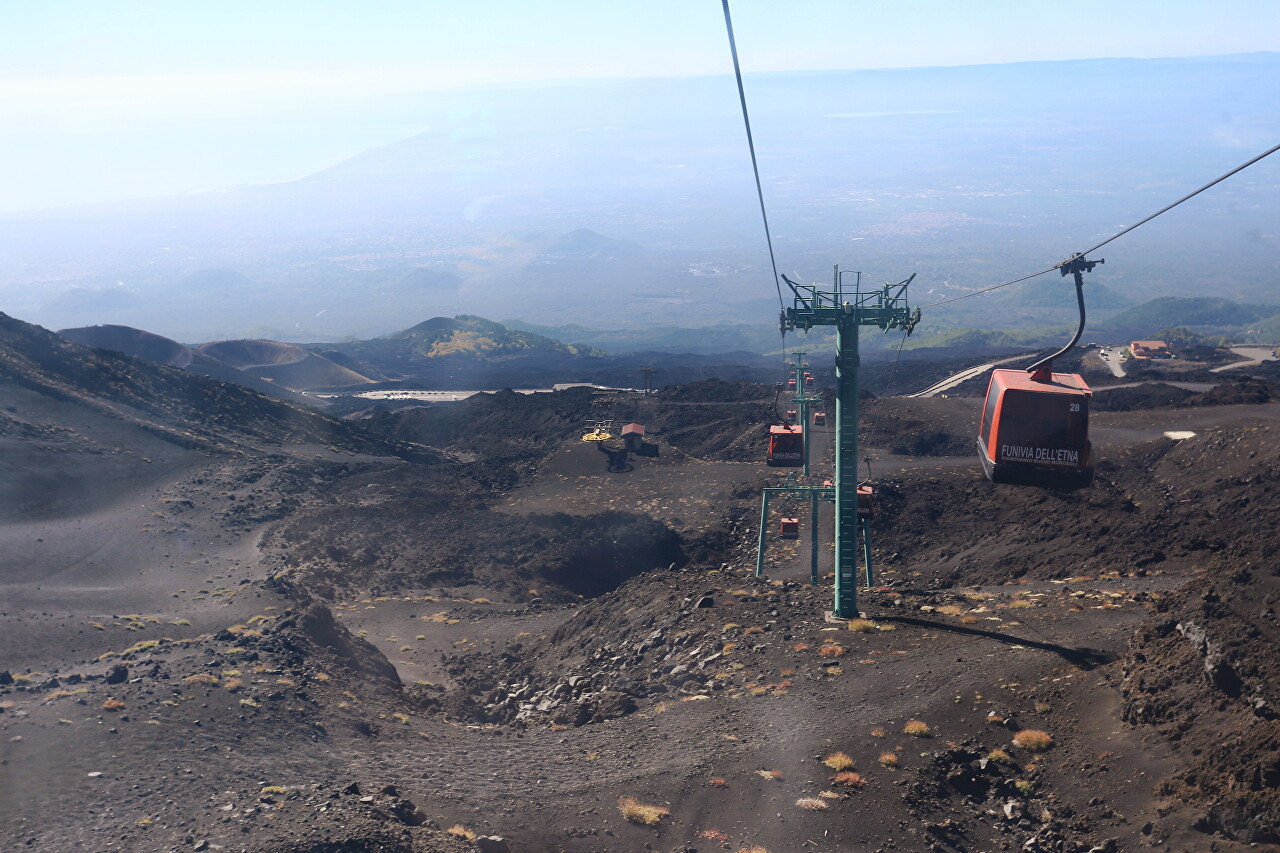Etna Cable Car
The second stage of the ascent to Mount Etna is the Funivia dell'Etna cable car. After getting off the bus, we go straight to the lower station of the cable car, where there is also a ticket office. A full guided tour to the Barbagallo craters at an altitude of about 2900 meters, where tourists are delivered by off-road buses, costs 59 euros for adults, 41 euros for children from 5 to 10 years old, and the smallest ones go free. The ascent only to the upper station of the cable car costs 30 euros (23 euros for children). You can also rent an audio guide here for an additional 9 euros.
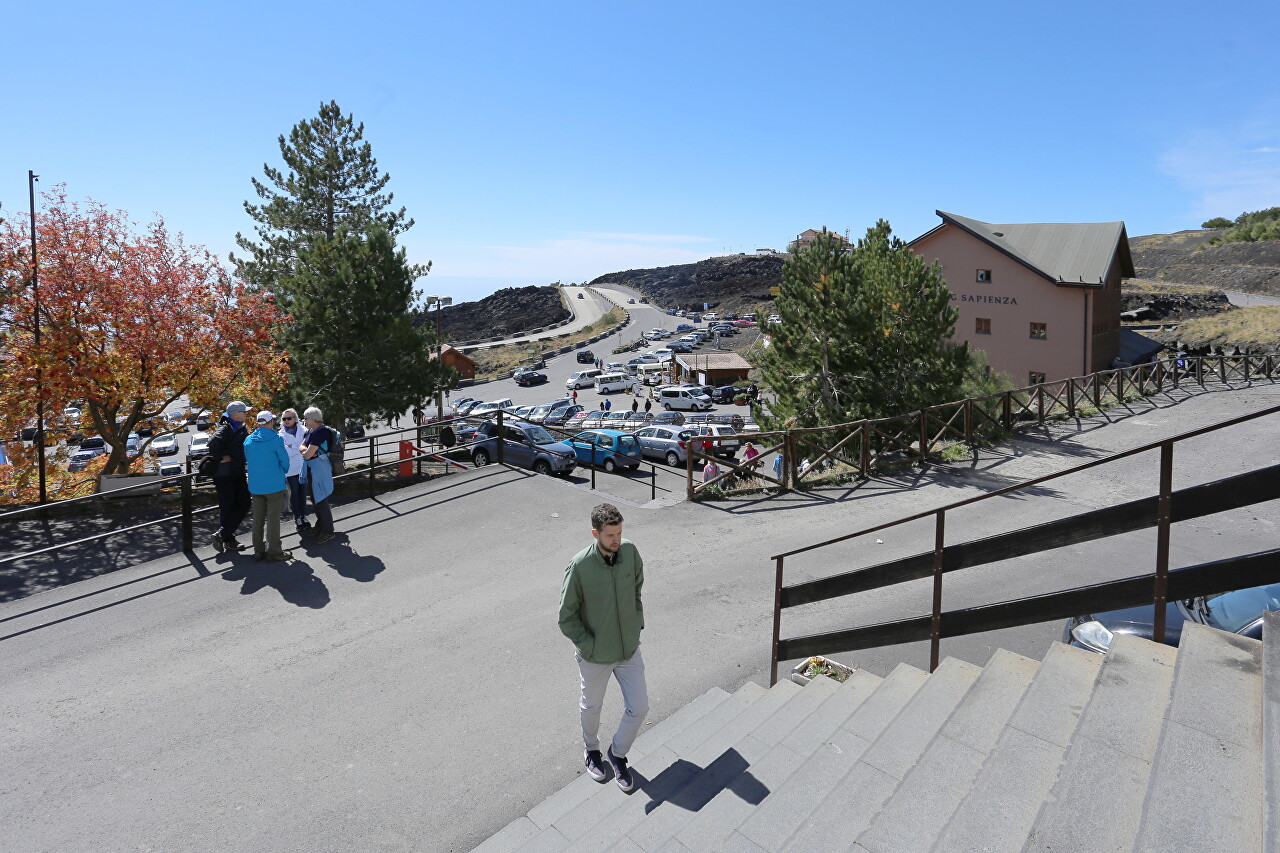
There was a small queue at the ticket office, where I studied the map of the southern slope of the volcano. The cable car has been operating since 1966 and has survived several eruptions. I will tell you about its history in a separate article.

Having received the ticket, I go to the room where I board the cabins. Here you can see the mechanisms that set them in motion. Although the cabs move relatively quickly on the rope, the mechanics at the landing site are designed so that they slow down, so that boarding and disembarking passengers does not cause problems even for people with limited mobility.
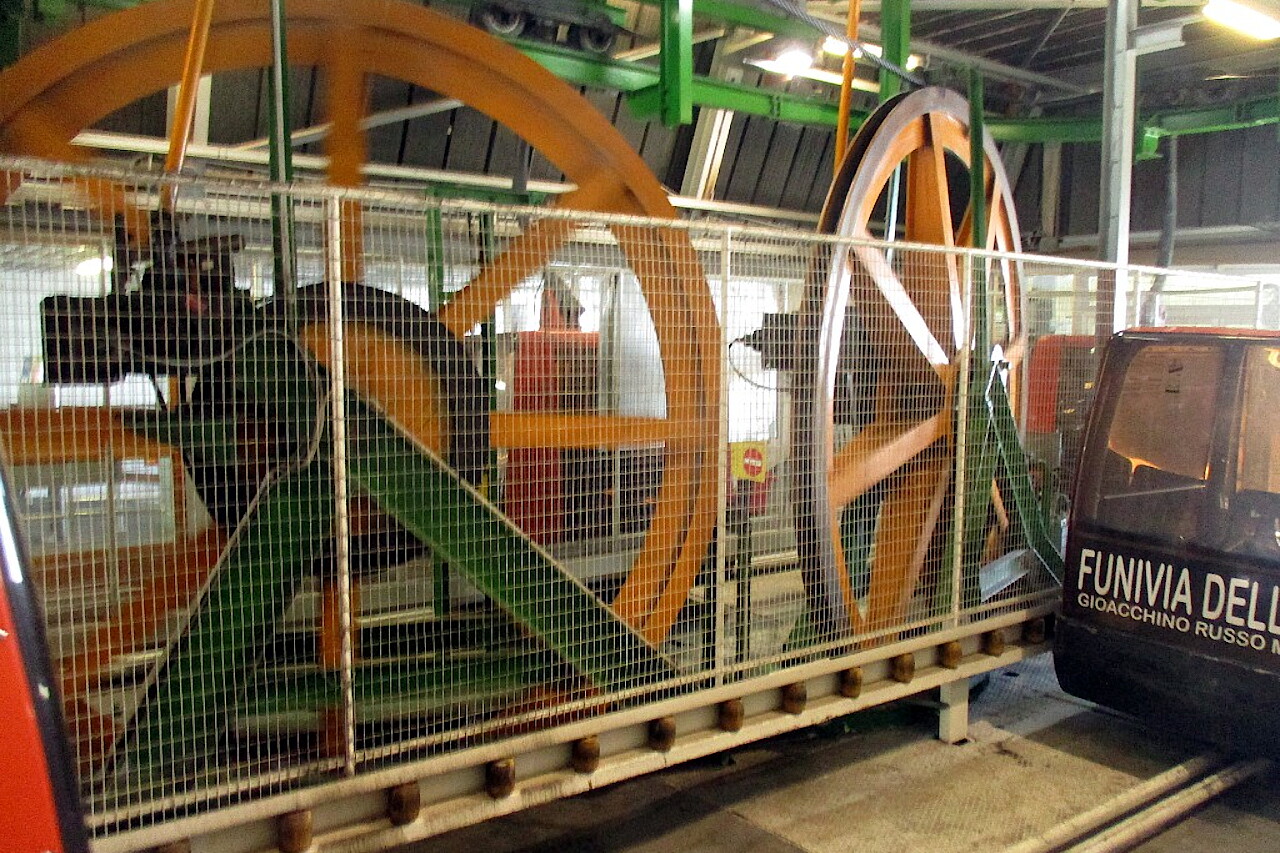
We leave the lower station, located at an altitude of 1927 meters above sea level. Immediately, tourists can see stunning views.
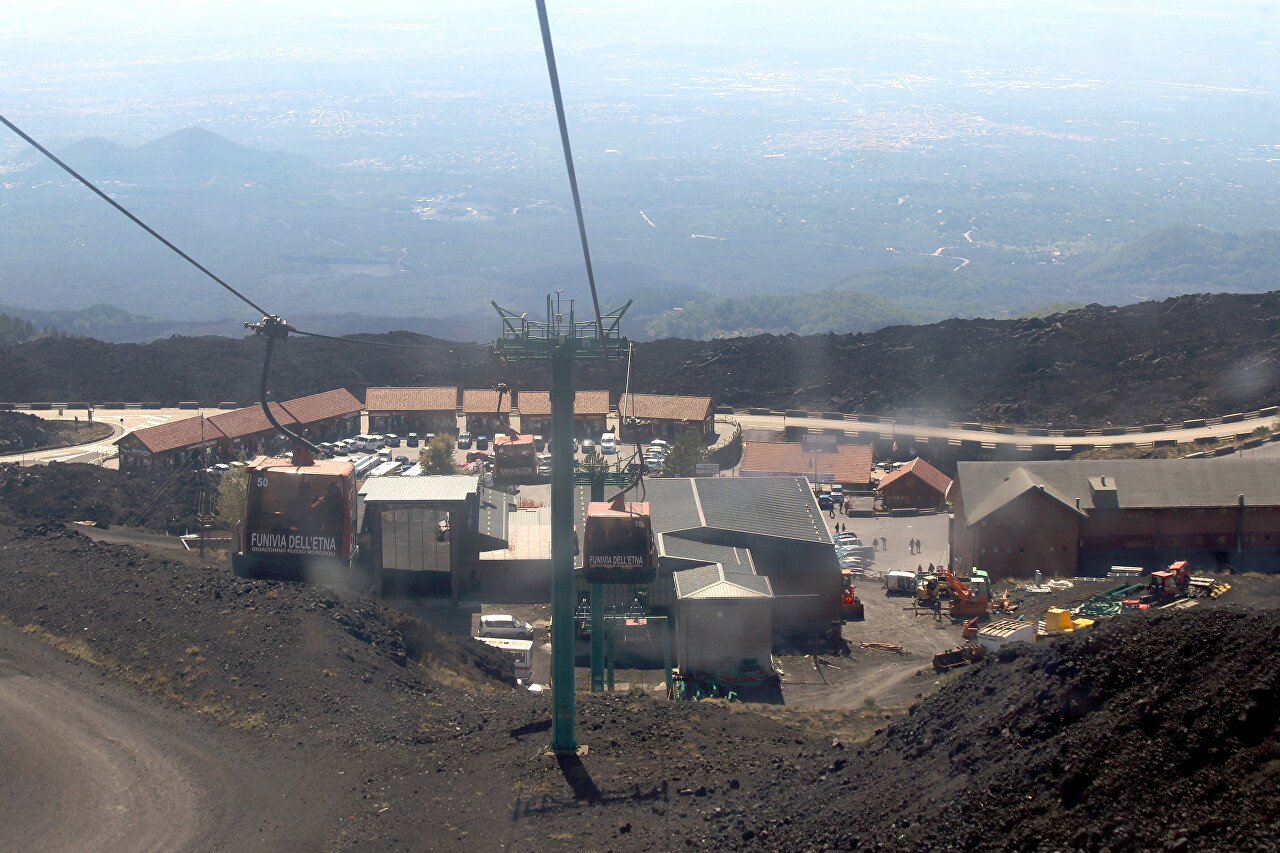
The wooded base of the volcano gradually turns into a densely populated coastal plain, which has repeatedly been subjected to serious danger and destruction during numerous eruptions, but nevertheless, people have repeatedly restored houses buried under ash and lava and continue to live next to a deadly neighbor.
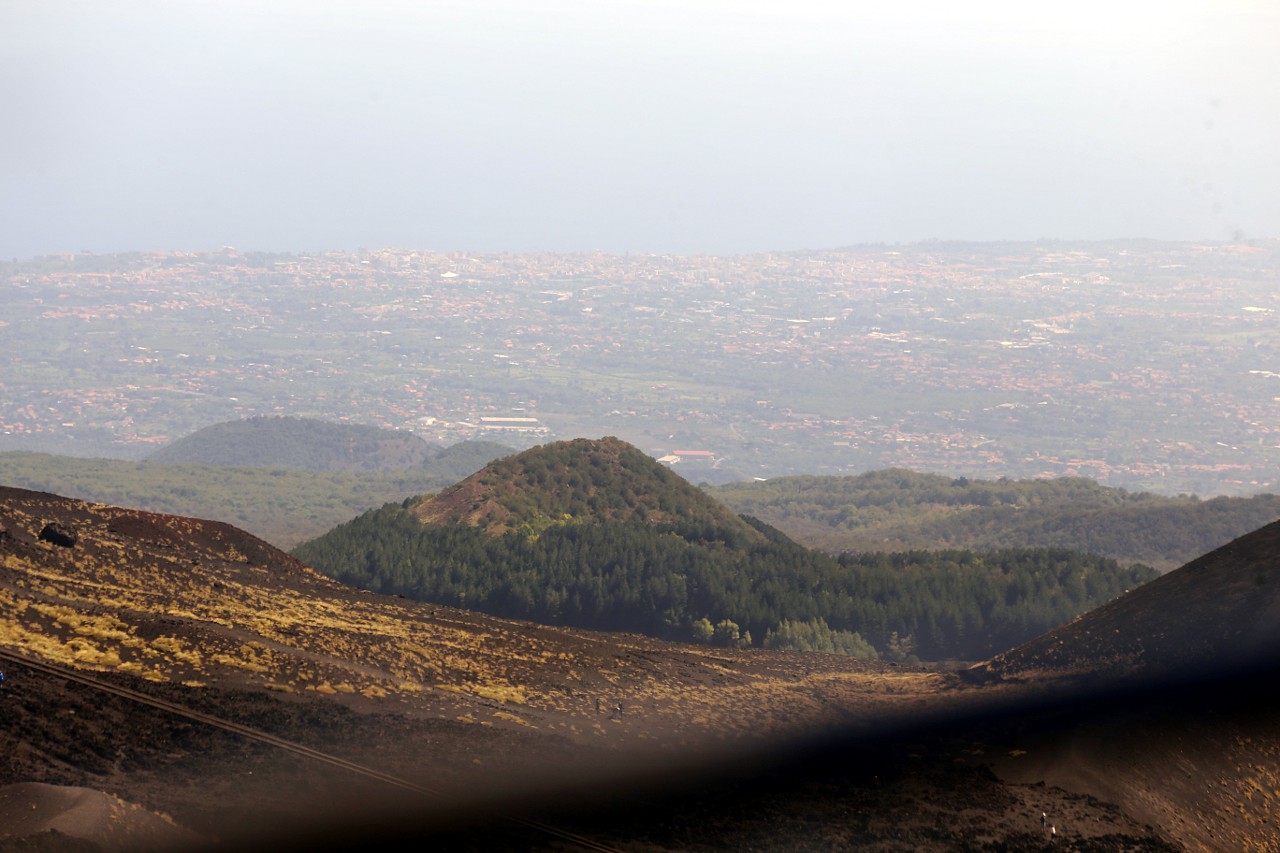
On the right, you can admire the upper Silvestri crater, which was formed during the largest eruption in the modern era in 2001, which destroyed the old cable car and half of the village of Rifgio Sapienza. We'll get to know him better when we get back from the top of Mount Etna.
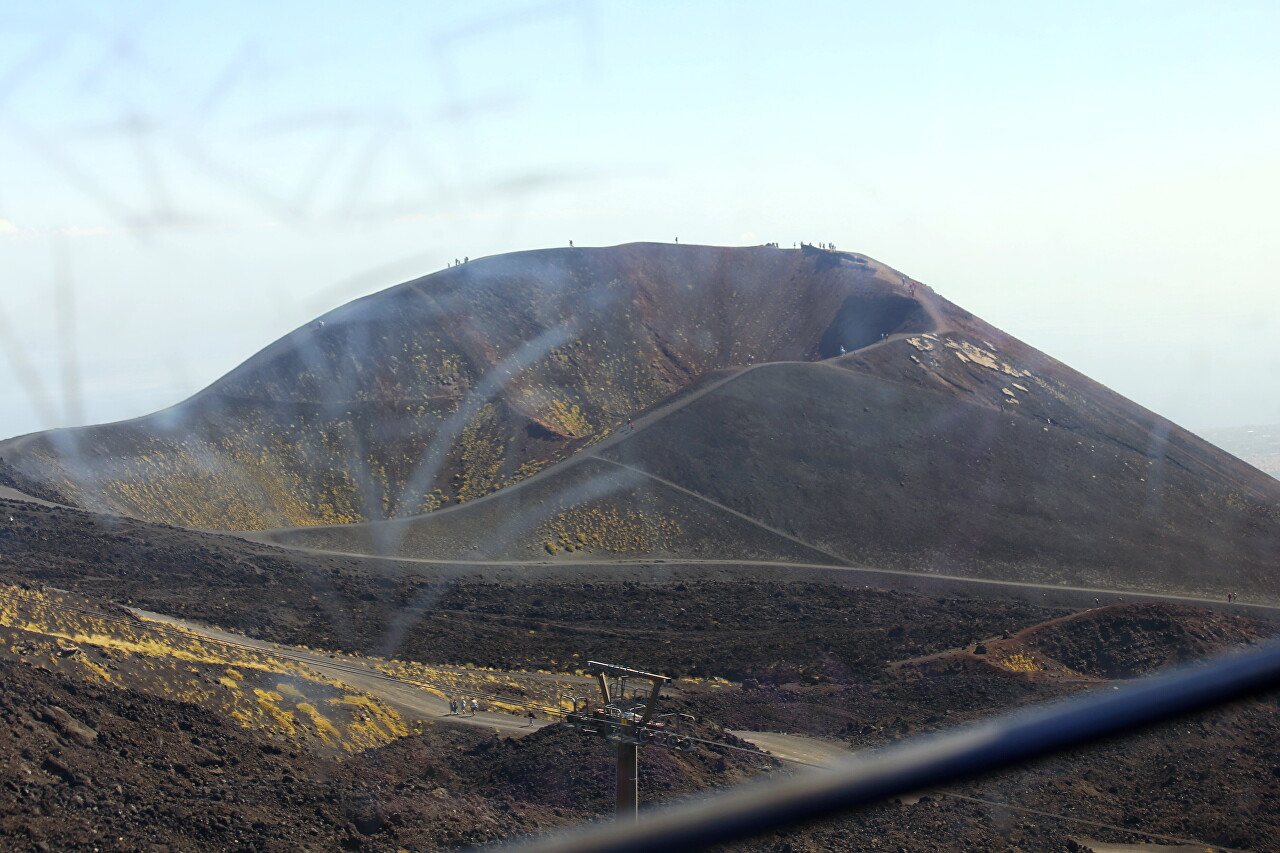
On the left is a slope covered with frozen lava, on which artificial stands of pine trees are made. Their roots strengthen the loose volcanic rock around the weather station.
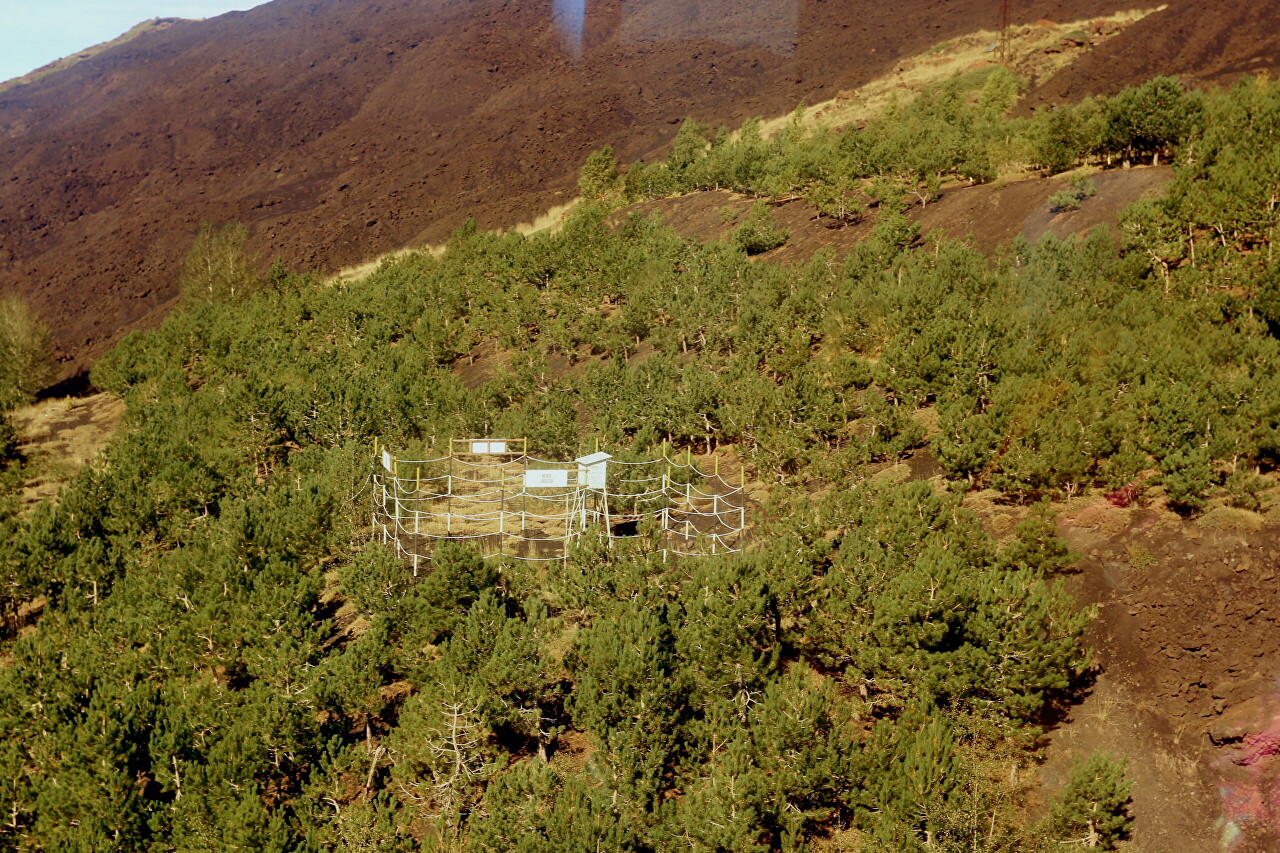
Vegetation appears very quickly on black fields after eruptions, as volcanic ash contains a huge amount of trace elements and is an excellent fertilizer. The amazing taste qualities of southern Italian wines are also directly related to the activity of numerous volcanoes.
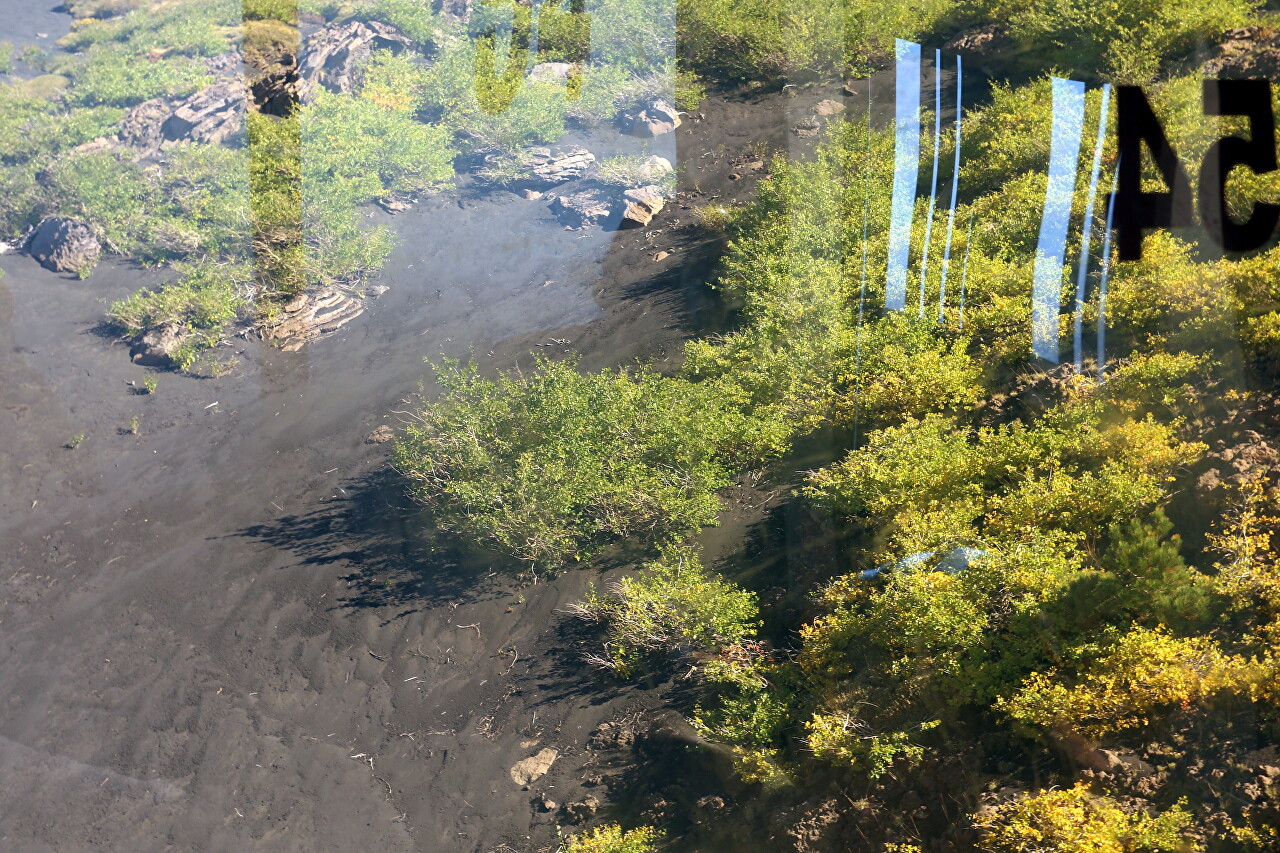
Green-covered slopes are cut by black bands of frozen lava from recent eruptions.
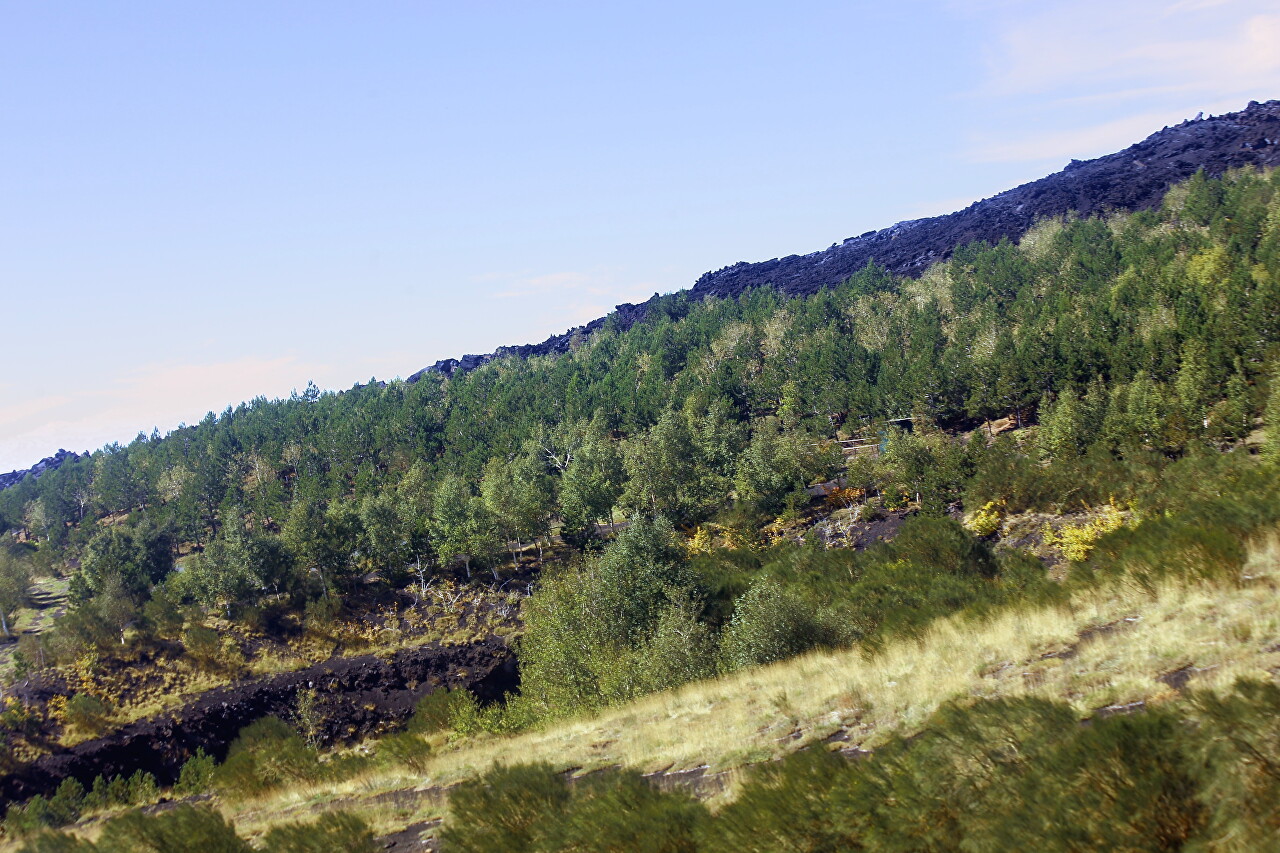
Below us, you can see figures of people cheerfully walking up with backpacks, wanting to test themselves and climb to the top of the volcano on foot. On the steep road laid through the frozen lava flows, in the morning you can see quite a lot of such climbers.
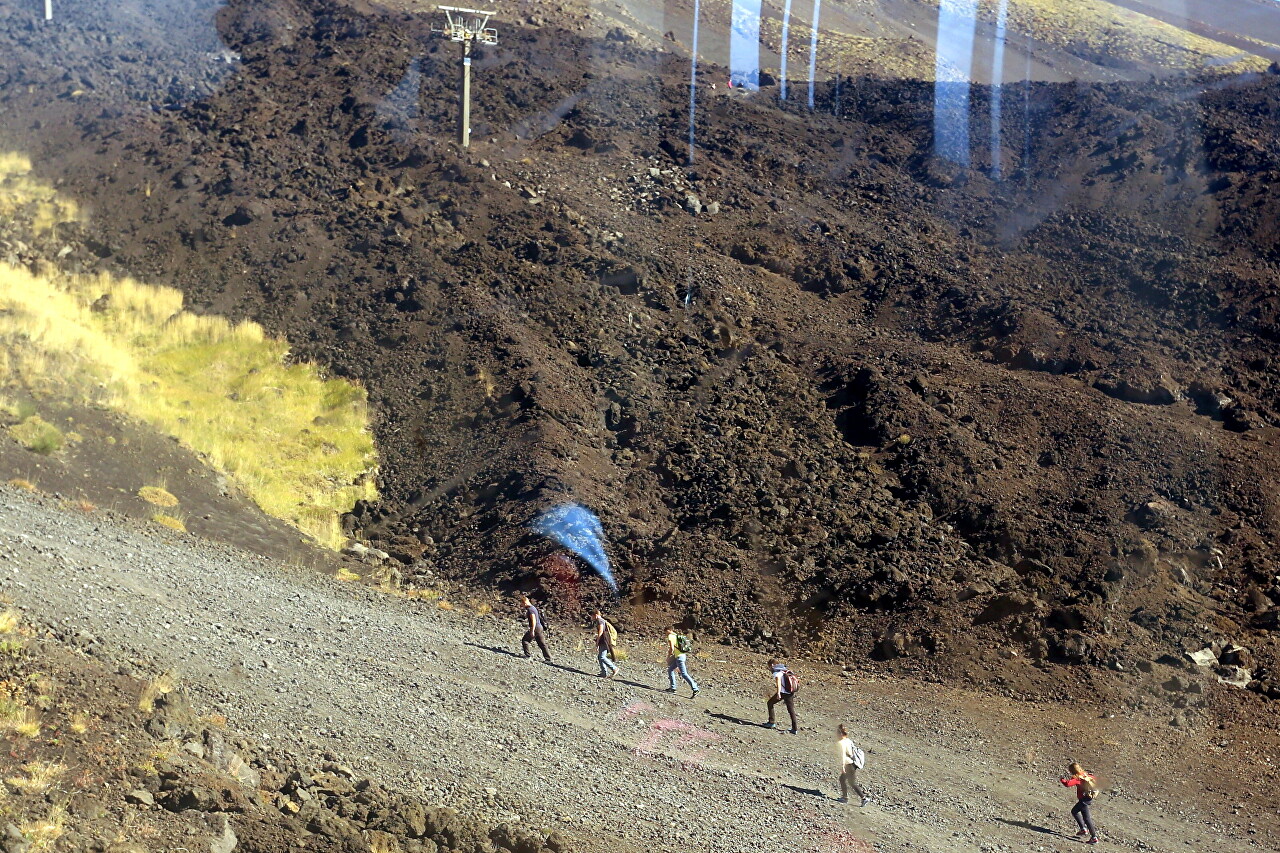
It is not known how many of them will cover the entire route, but several reports on a full hike in one day can be found on the Internet. Naturally, this requires serious physical training and special clothing.
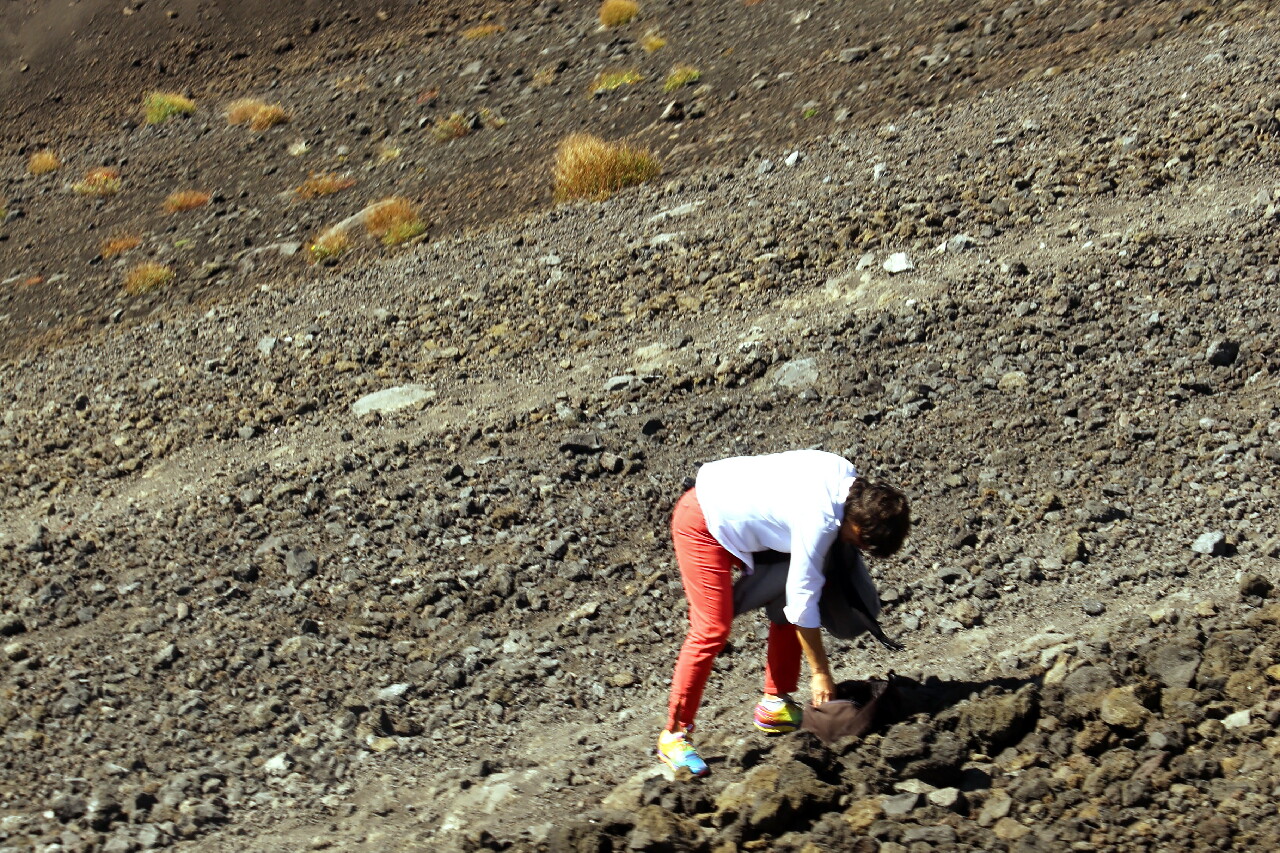
However, most enthusiasts are dressed in a completely summer-like way, and there are also those who carry babies in their chest or back cradles. You can notice that such family groups have baskets of food in their hands - today is a day off and residents of the nearest cities came here for a picnic, deciding to climb as far as they have the strength and desire.
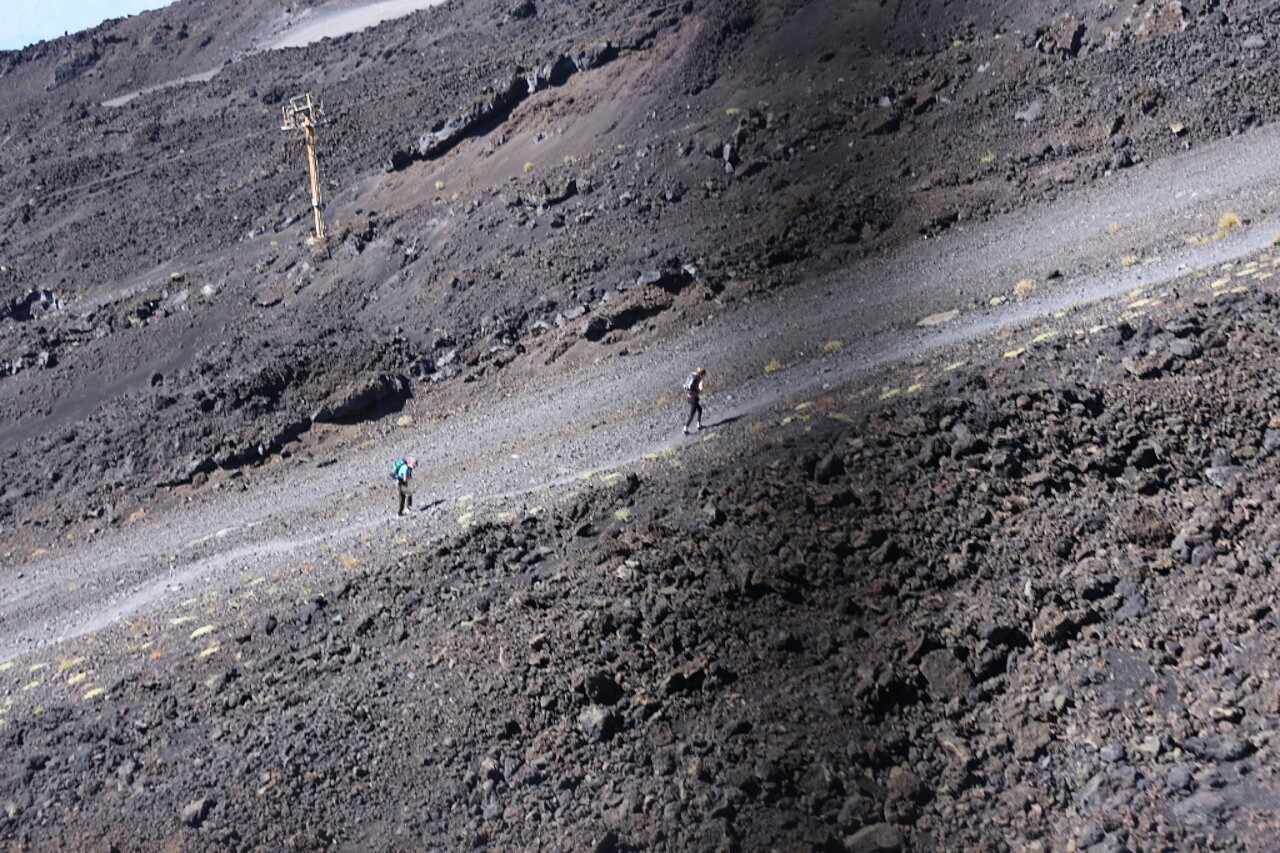
Well, I and my neighbors in the cabin - a German family from Dusseldorf - are watching this marathon with interest.

Looking back, I found that the gentle slopes of the lower part of the volcano are dotted with numerous cones of side craters. In just thousands of years, about four hundred of them have been formed, the lowest of them are located almost on the border of the city of Catania. On the left, you can clearly see the two-humped Monti Rossi near the town of Nicolosi, formed in 1669.
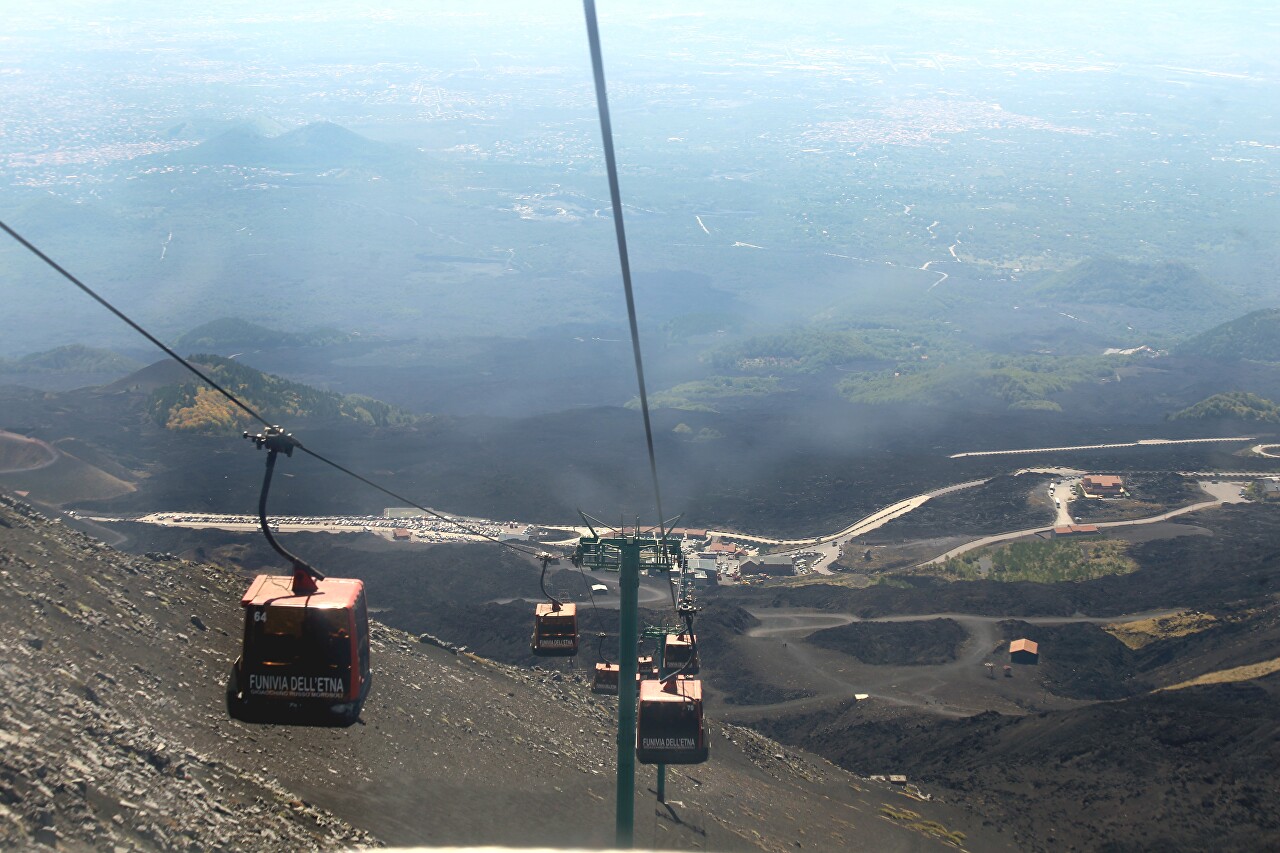
In some places, the cabs move a couple of meters from the surface. Towards the end of the route, the slope takes on a reddish hue. Shrubs replace plants that are well adapted to strong winds and low temperatures.
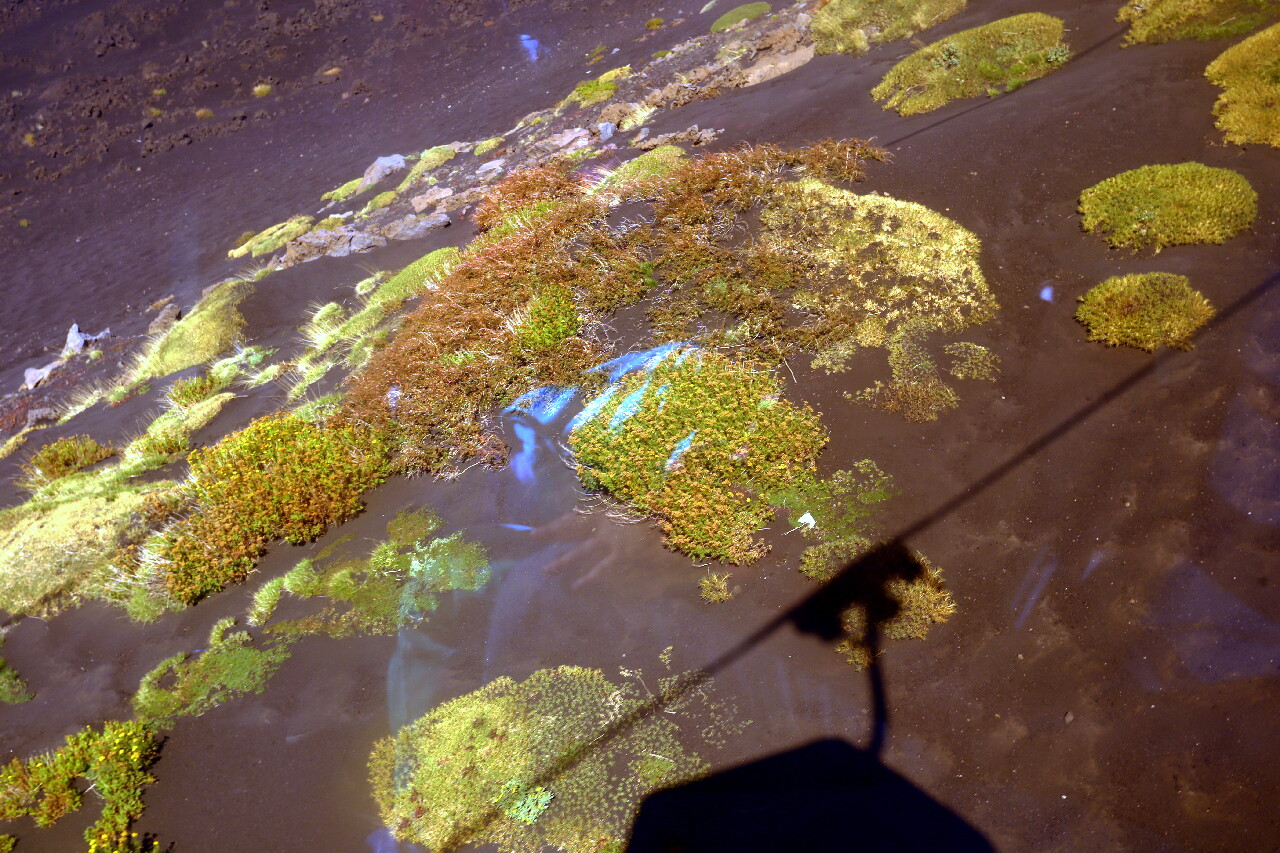
The linear length of the road is two thousand meters, the lifting height is 576 mers. Less than 10 minutes from landing in the cockpit, the upper station is visible up ahead, built at 2504 meters.
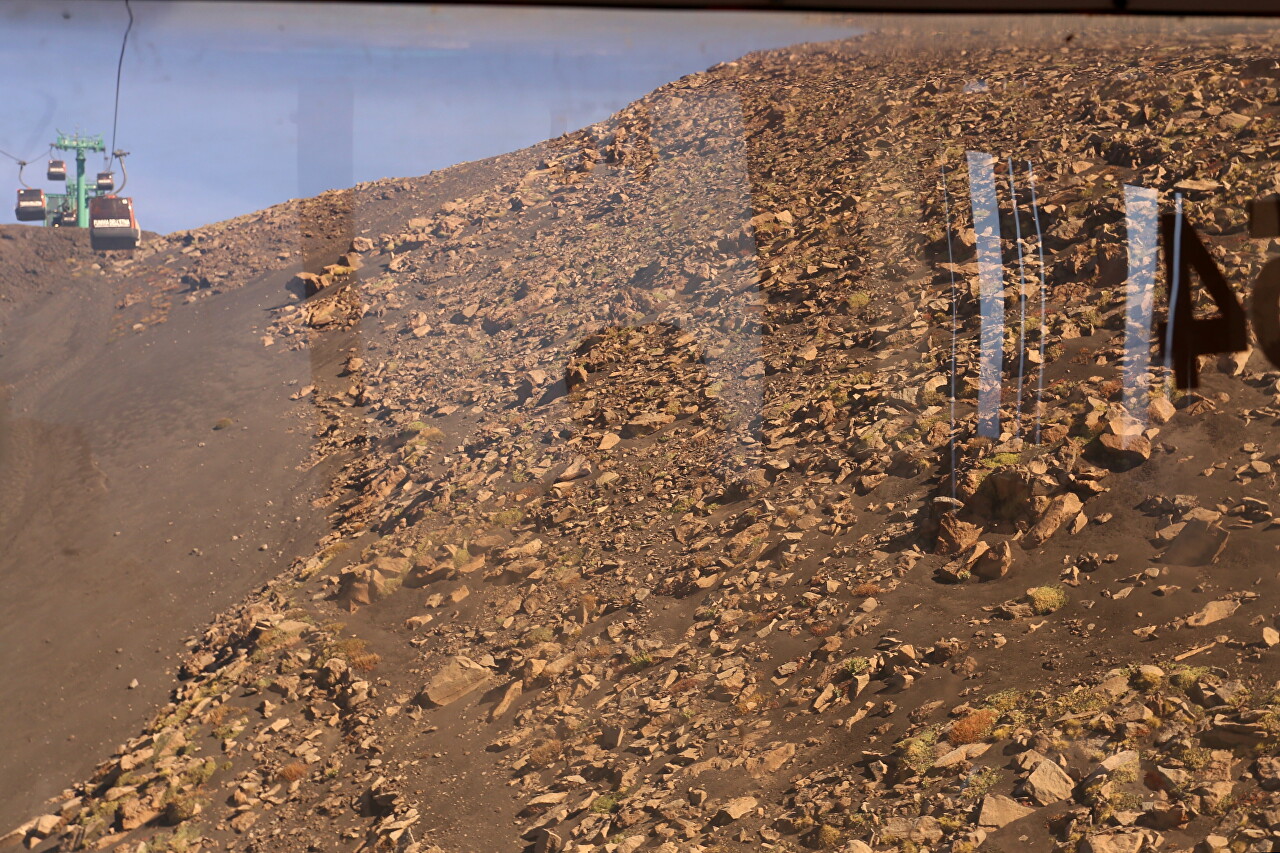
On the reverse side, an amazing panorama of the southern slope of the volcano stretches out below us, with the city of Catania at the foot and the endless sea surface.
